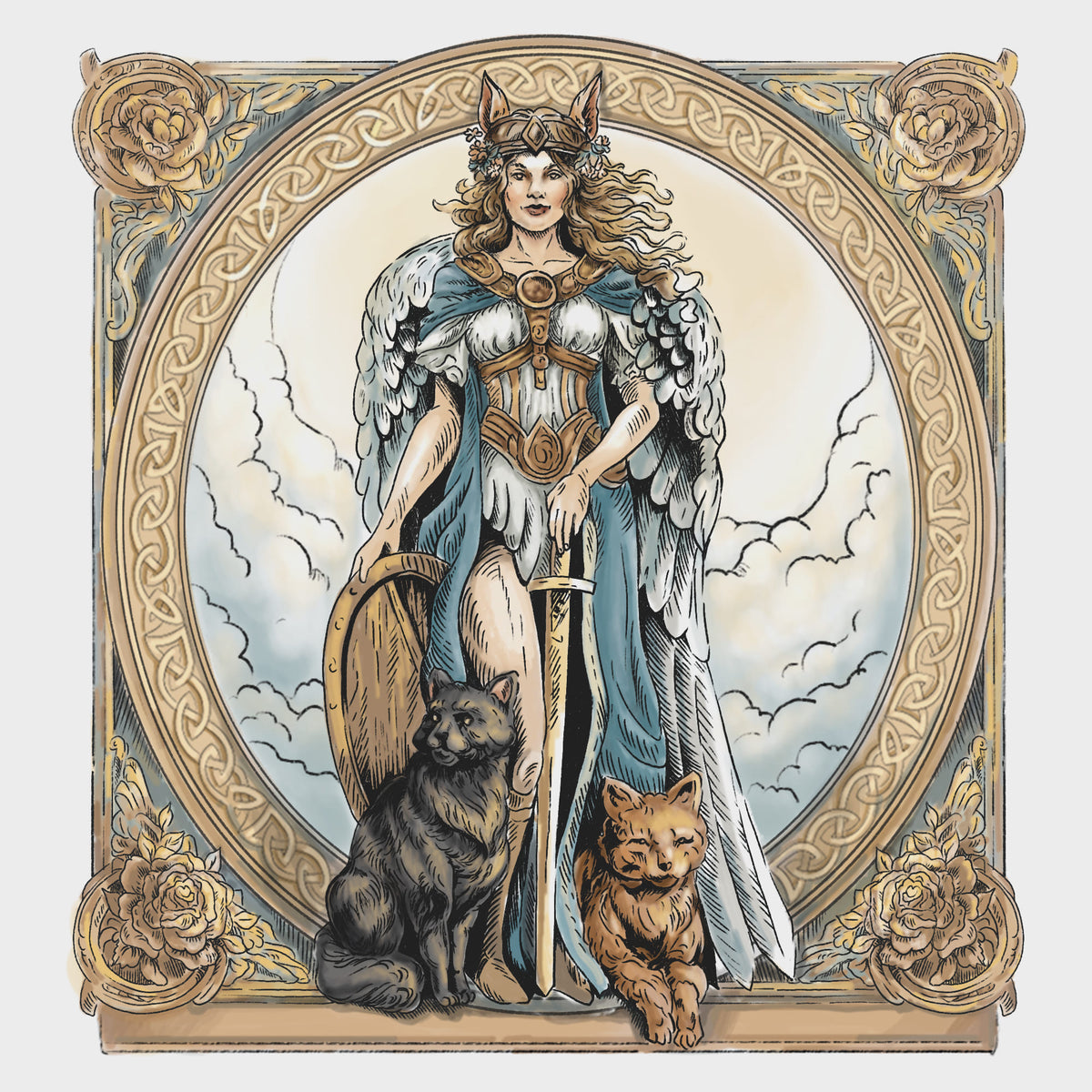
Freya – Goddess of Love, Fertility, and Seidr
Freya is one of the most central and powerful goddesses in Norse mythology. She is associated with love, fertility, beauty, and magic, but also with death and war. As one of the most frequently mentioned goddesses in both The Poetic Edda and The Prose Edda, she plays a significant role in the mythological universe.
Freya’s Origin and Affiliation
Freya belongs to the Vanir, a divine family closely linked to fertility and the cycles of nature. According to Gylfaginning in The Prose Edda, Freya and her brother Freyr were sent to the Æsir as part of a peace agreement following the war between the two groups of gods. She quickly became a respected member of the Æsir and took residence in Asgard, where she dwells in Folkvang, a place mentioned in Grímnismál, verse 14 of The Poetic Edda.
Freya as the Goddess of Love and Fertility
Freya is often compared to fertility goddesses from other cultures, and her function in Norse mythology reflects this. Her name directly translates to "lady" or "ruler," and she is a goddess invoked for love, marriage, and fertility.
She owns the famous necklace Brísingamen, which was forged by four dwarves. According to Sörla þáttr, a later Icelandic tale, Freya had to spend a night with each of the four dwarves to obtain it. The necklace symbolizes beauty, power, and fertility, and it is said to glow like the rising sun.
Freya and Seidr – Mastery of Magic
One of the most unique aspects of Freya is her connection to seidr, a form of magic that involves prophecy and the manipulation of fate. According to Ynglinga Saga, chapter 4 of Heimskringla, it was Freya who introduced seidr to the Æsir and taught Odin this powerful art.
Seidr was a special form of magic practiced by völvas, female seers who could glimpse into the future and influence the course of events. Seidr was considered both potent and potentially dangerous, which explains why Freya, one of the most powerful deities, was its greatest practitioner.
Freya as a War Goddess and Valkyrie-like Figure
Although Freya is often associated with love and beauty, she also has a warrior aspect. In Grímnismál, verse 14, it is said that Freya receives half of the fallen warriors in her hall, Folkvang, while Odin takes the other half into Valhalla. This suggests that she has a role similar to that of the valkyries, choosing the souls of fallen warriors.
Her connection to death and the afterlife makes her a more complex figure than a mere goddess of love. She embodies both life-giving and death-bringing forces, representing the full cycle of existence.
Freya’s Relations with the Jötnar and Their Desire for Her
Freya’s beauty and power made her a highly sought-after prize among the jötnar. In several myths, giants attempt to claim her as their bride.
In Þrymskviða (The Lay of Thrym), the giant Thrym demands Freya as his wife in exchange for returning Mjolnir, Thor’s hammer. Upon hearing this, Freya becomes so furious that her necklace, Brísingamen, trembles. Her rejection of Thrym demonstrates her independence and strength.
In another story, The Building of Asgard’s Wall, a giant offers to build a protective wall around Asgard in exchange for Freya’s hand in marriage. However, the gods deceive the giant with Loki’s trickery, allowing Freya to escape the agreement.
These myths emphasize not only Freya’s irresistible beauty but also her status as a figure who refuses to be controlled.
Freya’s Absence from Ragnarok
Unlike many of the major gods, Freya is not mentioned in the primary sources concerning Ragnarok. While Odin, Thor, and Loki all have crucial roles in the world’s destruction, Freya’s fate remains unclear.
Some scholars believe this may be due to her connection with the Vanir, possibly linking her to the new world that emerges after Ragnarok. As a fertility goddess, she may represent one of the forces ensuring that life continues after the great destruction.
Freya in Historical and Archaeological Findings
Beyond written sources, several archaeological discoveries may represent Freya. In particular, jewelry and figurines from the Viking Age depicting a female figure with ornaments or a staff (possibly a seidr staff) have been interpreted as representations of her.
At Tissø in Denmark, traces of a Viking Age cult site have been found where offerings to the gods were made. Some archaeologists believe that places like these could have been shrines where goddesses such as Freya were venerated.
Freya in Modern Times
Freya is one of the Norse gods who has remained most prominent in modern popular culture. She is frequently referenced in novels, films, and games, often portrayed as a strong, independent, and powerful woman.
In modern Norse neopaganism, Freya plays a central role as a goddess of love, sexuality, and magic. Her versatility makes her a figure that continues to fascinate and inspire people worldwide.
Conclusion
Freya is far more than just a goddess of love. She is a complex figure embodying beauty and power, love and war, life and death. Her connection to fertility, magic, and the afterlife makes her one of the most versatile and significant goddesses in Norse mythology.
Her legacy lives on through ancient texts and modern interpretations, ensuring that she remains one of the most beloved figures in Norse tradition.

